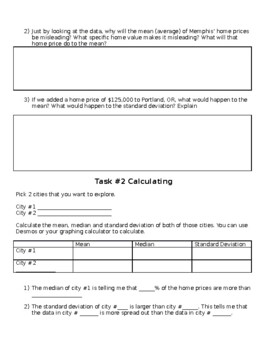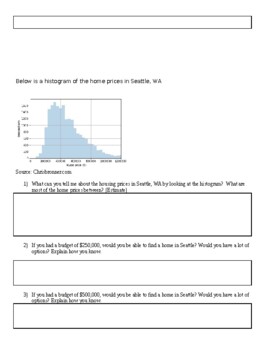Home Prices: High School Statistics Project
- Word Document File
What educators are saying
Description
This statistics project has students exploring home prices and using their knowledge of mean, median, standard deviation, histograms, box and whisker plots, and bell curves to make predictions and inferences about the data. This project is provided in a word document to allow the teacher the ability to edit the document or load it to a google doc.
In this project students first make predictions about measures of spread and central tendency without calculating but by looking at the data. Students then calculate standard deviation, mean and median and make statements about the data using these measures. Students then create histograms and box and whisker plots and interpret a provided histogram and box and whisker plot. Lastly, students use a provided bell curve to make statements about the data.
This project does require a teacher to provide instruction prior to the project.
Answer Key Link is provided at the end of the document





